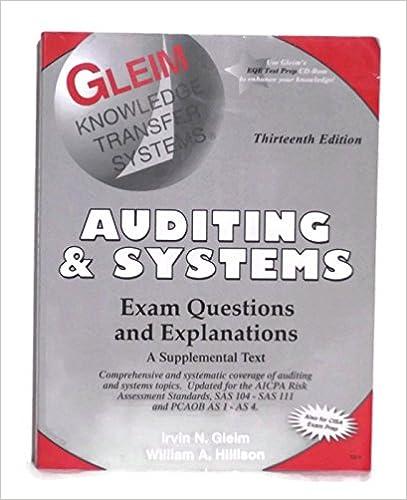Question
By the time the New York identity theft fraud case was solved, more than 30,000 people had suffered a total combined loss in excess of
By the time the New York identity theft fraud case was solved, more than 30,000 people had suffered a total combined loss in excess of $2.7 million. This money had been stolen by a ring of New York residents who accessed the victims credit information and exploited that information to steal the victims identity. The fraud began when Linus Baptiste approached Philip Cummings about a plan to steal and sell peoples personal information. Philip Cummings had begun to work at Teledata Communications, Inc., a third party credit-reporting agency that facilitates the retrieval of credit history data. Teledata had outstanding contracts with more than 25,000 companies, allowing these companies to check on the creditworthiness of potential customers, thus creating a direct line past the three main credit bureaus. As a customer service representative, Cummings had obtained access to many confidential access codes. These access codes were used by the clients of Teledata to gain approval on credit requests. With access to these codes, Cummings had the opportunity to commit fraud. In early 2000, Cummings and Baptiste began to steal credit reports. The two fraudsters had a buyer for the information in a group of Nigerian nationalists. The Nigerians would pay up to $60 for one persons information. After some time, the Nigerian nationalists began to provide the two fraudsters with names and social security numbers to help facilitate the process even further. To convert the information into money, the Nigerians used the information to gain access to the victims bank accounts and other financial information. The Nigerians would then: Deplete the bank accounts of the victims through wire transfers. Change the addresses of the accounts so the current information was not sent to the victims. Order new checks to be written off of the victims bank accounts. Order new ATM cards so the money could be taken out in cash. Order new credit cards under the victims names. Establish new lines of credit under the victims name. By using these techniques, the fraud ring was able to steal more than $2.7 million from consumers. This money was stolen over a period of about three years from late 1999 to late 2002. The most intriguing aspect of the fraud was that Cummings quit working at Teledata in early 2000, but was able to continue to steal the information for an additional two years. Cummings claimed that most of the access codes he stole while working at Teledata remained unchanged for the full two years after he left the company. Finally, in early 2002, Cummings began to get greedy and his greed led to the detection of fraud. Perceiving that he needed to make more money, Cummings stole about 15,000 credit reports from Teledata by using the access codes of Ford Motor Company. Then from February 2002 to May 2002, Cummings again stole a large number of names. This time Cummings used the access codes of Washington Mutual Bank to steal 6,000 credit reports. Finally, in September 2002, Cummings made what would be his last big credit report theft. Using the access codes of Central Texas Energy Supply, Cummings was able to steal 4,500 credit reports. After the theft using Fords access codes, Equifax, one of the three large credit bureaus in the United States, began to see the request spikes in Fords account. After the next two large batches of requests, Equifax decided to investigate further. Equifax found that almost all of the credit report requests came from one phone number, and that the request were done in large batches of about 100. The location of the phone number was found and a search by federal authorities turned up a computer and other equipment used in the fraud
Question
Create a vulnerability chart to coordinate the various elements of the possible fraud
Step by Step Solution
There are 3 Steps involved in it
Step: 1

Get Instant Access to Expert-Tailored Solutions
See step-by-step solutions with expert insights and AI powered tools for academic success
Step: 2

Step: 3

Ace Your Homework with AI
Get the answers you need in no time with our AI-driven, step-by-step assistance
Get Started


